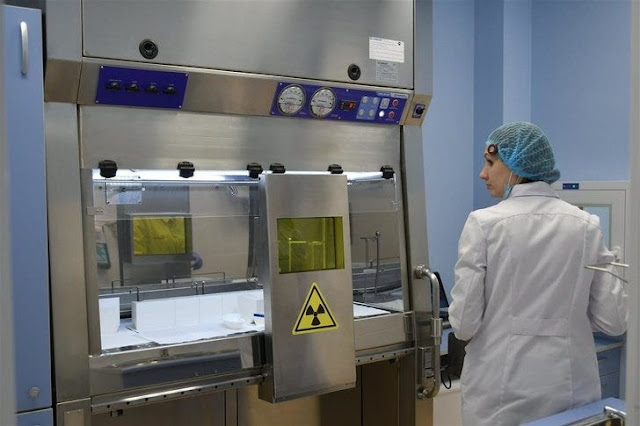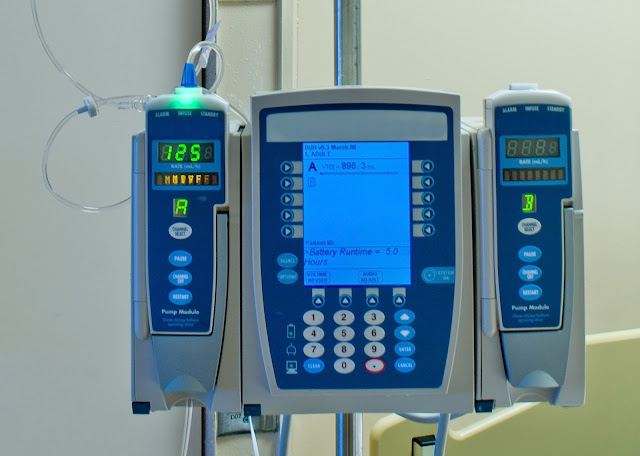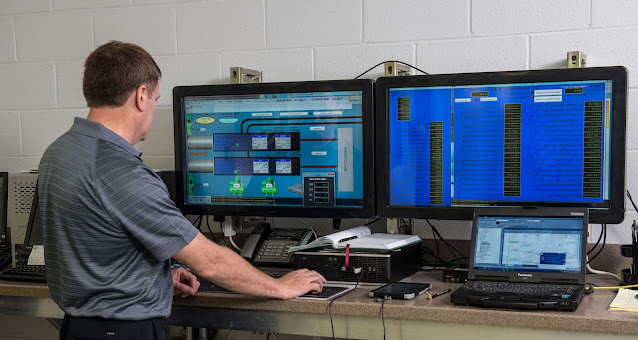Radiopharmaceuticals In Nuclear Medicine Utilizes Radioactive Substances For Diagnostic
 |
| Radiopharmaceuticals In Nuclear Medicine |
Radiopharmaceuticals In Nuclear
Medicine are a fundamental
component, a medical discipline that utilizes radioactive substances for
diagnostic and therapeutic purposes. These specialized pharmaceutical compounds
combine a biologically active molecule with a radioactive isotope, enabling
targeted delivery of radiation to specific organs or tissues within the body. The
production of radiopharmaceuticals involves a process called radiolabeling, in
which a radioactive isotope is incorporated into a biologically active
molecule. The choice of isotope depends on the intended application of the
radiopharmaceutical. Commonly used isotopes in nuclear medicine include
technetium-99m (Tc-99m), iodine-131 (I-131), and fluorine-18 (F-18). These
isotopes emit different types of radiation, such as gamma rays or positrons,
which can be detected and quantified using specialized imaging devices.
According To Coherent Market
Insights The Radiopharmaceuticals
In Nuclear Medicine Market Is Anticipated To Reach A Value Of US$ 6,700.5
Million In 2020 And Grow At A CAGR Of 8.0% From 2020 To 2027.
Radiopharmaceuticals In Nuclear
Medicine have significant
diagnostic applications in nuclear medicine. They are primarily used for
imaging purposes, allowing physicians to visualize and evaluate the structure
and function of organs and tissues. Tc-99m, with its favorable physical
properties and short half-life, is the most widely used isotope for diagnostic
imaging. It is often combined with ligands that target specific organs or
tissues, enabling the visualization and assessment of various physiological
processes. For example, Tc-99m-sestamibi is used for myocardial perfusion
imaging to evaluate blood flow to the heart, while Tc-99m-pertechnetate is
employed for thyroid imaging to assess thyroid function and detect
abnormalities. Positron emission tomography (PET) is another imaging technique
that relies on Radiopharmaceuticals In
Nuclear Medicine. PET uses positron-emitting isotopes, such as F-18 or
carbon-11 (C-11), which decay by emitting positrons. These positrons interact
with surrounding electrons to produce pairs of gamma rays, which are detected
by PET scanners. This enables the creation of three-dimensional images that
provide information about metabolic and molecular processes in the body. The
most commonly used PET radiopharmaceutical is F-18-fluorodeoxyglucose (FDG),
which takes advantage of the increased glucose metabolism of cancer cells,
allowing for the detection and staging of various types of cancer.
Radiopharmaceuticals In Nuclear
Medicine also play a vital role
in therapeutic. These pharmaceutical compounds can deliver targeted radiation
to specific tissues or organs, providing effective treatment for certain
diseases. For instance, I-131 is frequently used for the treatment of thyroid
disorders, including hyperthyroidism and thyroid cancer. By selectively
accumulating in thyroid tissue, I-131 delivers radiation directly to the
thyroid, destroying abnormal cells while minimizing damage to healthy tissues.
Other therapeutic radiopharmaceuticals include Sm-153 and Lu-177, which are
utilized for bone pain palliation in patients with metastatic bone cancers. The
production and handling of radiopharmaceuticals require stringent adherence to
radiation safety protocols. These pharmaceuticals are produced in specialized
facilities equipped with cyclotrons or nuclear reactors capable of generating
the desired isotopes. Quality control measures ensure the purity, radiochemical
stability, and appropriate dosage of radiopharmaceuticals. Strict regulations
and guidelines are in place to ensure the safe transportation, storage, and
disposal of radioactive materials.
For
Watching A YouTube Video On Radiopharmaceuticals In Nuclear
Medicine Click On:
Https://Www.Youtube.Com/Watch?V=Vdtbusd4a3i
You Can Also Read Press Release: Https://Www.Coherentmarketinsights.Com/Press-Release/Radiopharmaceuticals-In-Nuclear-Medicine-Market-To-Surpass-Us-106-Billion-Threshold-By-2026-111



Comments
Post a Comment